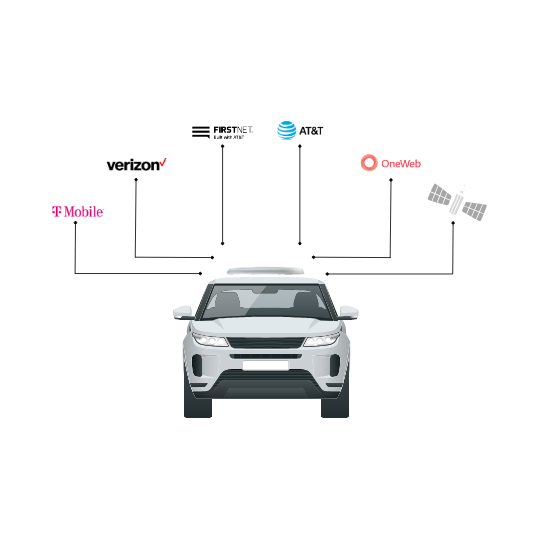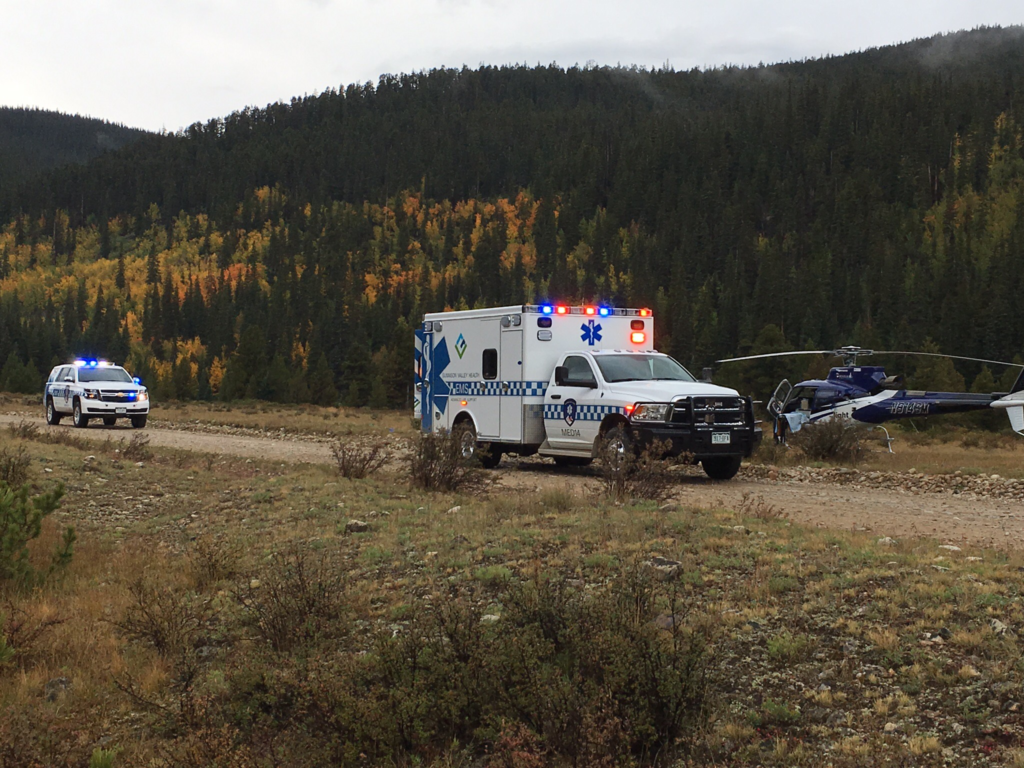BLOG
From Dropped Calls to Dispatch: Solving Public Safety’s Most Critical Communication Challenge
When it comes to public safety, there’s no tolerance for dropped communications. But the challenge isn’t just about unreliable cell service — it’s about the gap between dispatch radio coverage and the growing need for full in-vehicle broadband connectivity.
For many agencies, Land Mobile Radio (LMR) is still the primary channel for dispatch and voice coordination. But even modern LMR systems, like Motorola’s APX series, which now support limited IP data and come equipped with SIM cards, face constraints — particularly around bandwidth and coverage.
These radios may allow location sharing or basic text messages, but they simply can’t support the demands of data-rich applications that today’s field operations rely on.

The Reality in the Field
Dispatch radio coverage is inherently regional. Once a unit moves beyond the system’s reach — due to terrain, jurisdictional boundaries, or distance — LMR voice and limited data drop out. And while some LMR devices can connect via cellular, they’re still subject to the same limitations as any other single-carrier LTE device:
No signal = no connectivity
Congestion = severely degraded performance
Limited bandwidth = not enough throughput for high-demand applications
At the same time, modern public safety operations are increasingly built around in-vehicle broadband:
AVL (Automated Vehicle Location) to improve dispatch efficiency and personnel safety
Real-time routing, mapping, and GIS overlays
Medical telemetry, patient tracking, and mobile health platforms
Video streaming, surveillance offload, and remote briefings
CAD access, incident command tools, and analytics
These tools require more than what an LMR radio or a single LTE modem can deliver. They require consistent, high-throughput broadband connectivity — in motion, in remote terrain, and under heavy load.
Why LMR and LTE Aren’t Enough
Here’s where the current communication stack often falls short:
| LMR (Land Mobile Radio) | Vehicle-Based Broadband (SuperGIG™) |
|---|---|
| Primarily mission-critical voice | Voice + full data platform (apps, video, GPS) |
| May support GPS and basic IP data | High-throughput connectivity to power field applications |
| Limited range, terrain dependent | Global-ready with satellite integration |
| Cellular SIMs still depend on single-carrier LTE | Multi-carrier LTE blended with LEO satellite |
While LMR plays an essential role in voice coordination and remains a backbone of public safety comms, it doesn’t meet the needs of today’s connected vehicle.
What Happens When Both Break Down?
Picture a responder driving through terrain that cuts off LMR signal and lacks reliable LTE. The radio drops out. The cellular fallback isn’t strong enough to run AVL, let alone support telehealth apps, CAD terminals, or video. From a command center’s perspective, that unit has vanished — no location updates, no data, no contact.
It’s not just a communications issue. It’s a visibility and safety problem.
Bridging the Gap with SuperGIG™
At IP Access International, we help agencies go beyond the tower by enabling broadband in the vehicle — even in areas where both LMR and LTE falter.
Our solution, SuperGIG™, combines:
Multi-carrier LTE (Verizon, FirstNet, T-Mobile)
Always-on LEO satellite from Eutelsat OneWeb
Optional GEO satellite augmentation
Gateways from trusted providers like Dejero, Peplink, and Cradlepoint
This results in seamless, blended connectivity that ensures:
✅ AVL and vehicle location stay live — even off-grid
✅ Data-hungry apps function in real-time
✅ Field units retain access to maps, CAD, health platforms, and more
✅ No interruptions from network loss, congestion, or transition zones

Use Case; Rural EMS in the Rockies
In one rugged region of the western U.S., EMS crews routinely lost both radio contact and LTE for over 45 minutes while transporting patients across mountainous terrain. After implementing SuperGIG™, vehicles now:
Stay connected via satellite where LTE fails
Provide live GPS and vehicle telemetry back to dispatch
Transmit patient data en route
Access real-time routing tools and telehealth apps
The result? Better situational awareness, safer crews, and more effective emergency care.
Two Channels. One Mission.
LMR isn’t obsolete — it’s essential. But in today’s operations, voice isn’t enough. Vehicles need full-spectrum connectivity to power the applications that keep people safe, informed, and responsive.
With SuperGIG™, you’re not replacing your LMR — you’re extending your reach with broadband built for the field.
🚨 Ready to future-proof your field communications?
Let’s build a system that supports voice, data, and everything in between — no matter where the job takes you.
